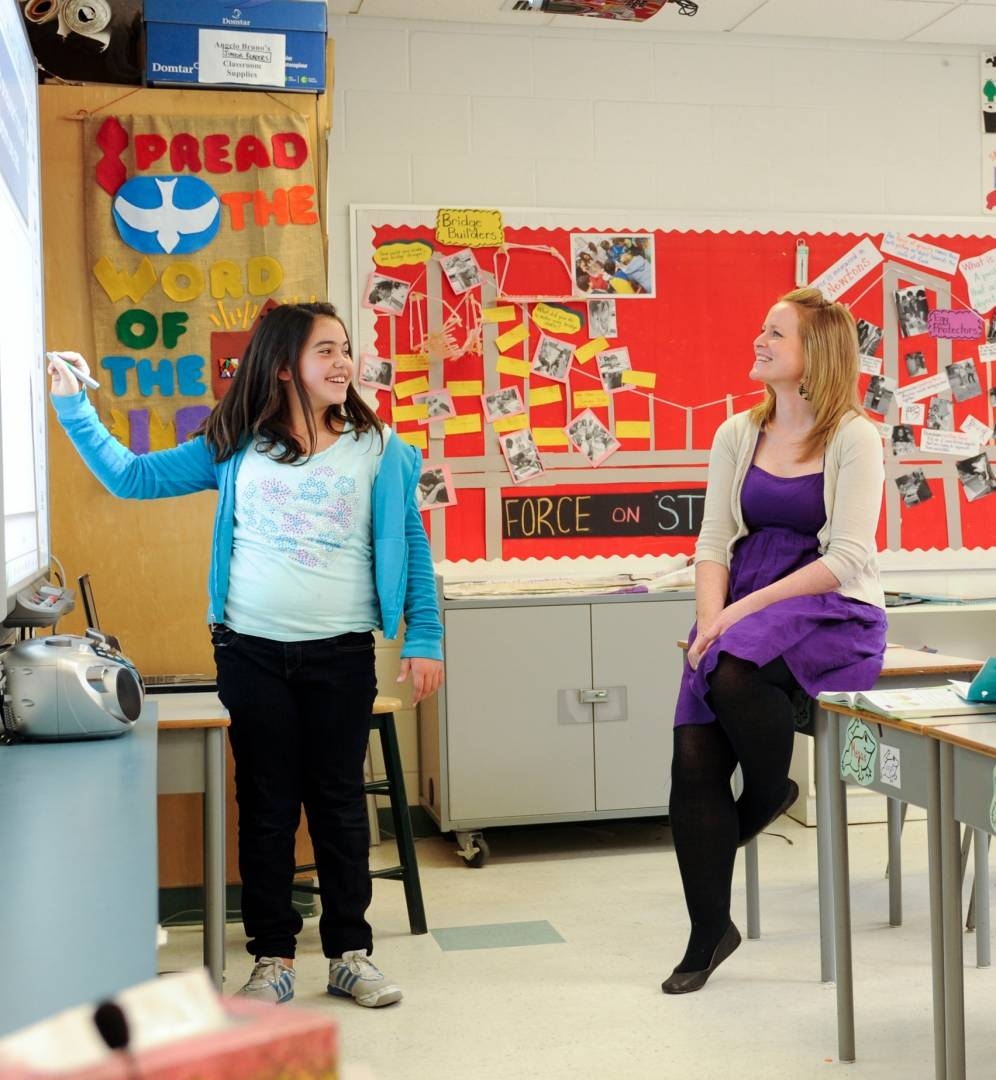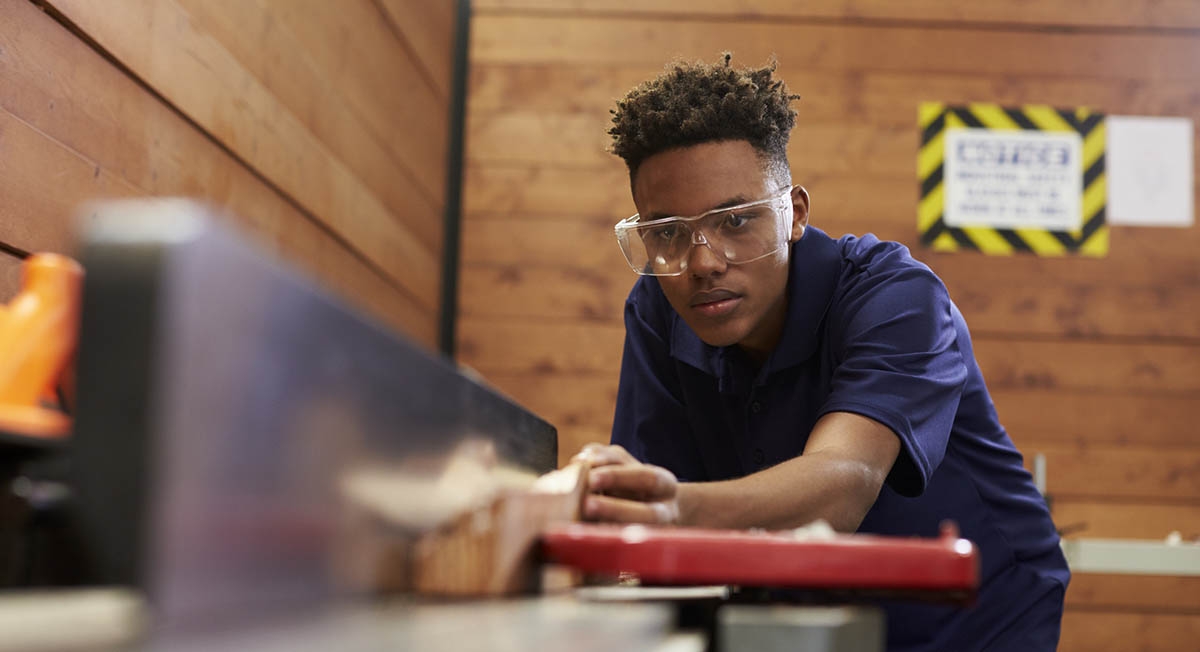
Digital tools prepare today’s students for tomorrow’s challenges
How do you engage the short attention spans of today’s student, shaped by a technological revolution, wanting to be more self-directed using visual, auditory and technology to understand the world around them? Harder yet, how do you adapt a curriculum to their individual needs ensuring they are built for success in the ever-changing, increasingly competitive work world? At the Ottawa Catholic School Board (OCSB), the approach is simple and summed up in one word: team.
Implementing technologies in the classroom – whether SMART Boards or once prohibited handheld devices, the board saw an opportunity to engage students with a new set of learning tools that require them to be not only learners, but facilitators and teachers of their own. This has built a team within every classroom – students helping their peers, students collaborating with teachers on how to incorporate technology and teachers receiving support from OCSB in directing a new path – a technology blueprint.
“We’re seeing the children coming to school now in a digital society and bringing their knowledge and experiences with technology and in essence, becoming teachers or facilitators for everyone’s learning,” said Angelo Bruno, who is the grade 5 and resource teacher at St. Luke’s Elementary School in Barrhaven. “Everyone is taking on a greater ownership in his or her own education and in assisting others in ways that simply make better sense to them than they would coming from an adult. It certainly gives me a lot of perspective.”
In his fifteenth year of teaching, he said he has seen great change in the last decade with the emerging generation and believes it is important to embrace technology to heighten learning and successfully appeal to all types of learners.
“It’s important for teachers to allow students to take the lead role,” Bruno added. “This also allows me to help other students as my time is limited with individualized instruction. They see new things I may have overlooked or missed – whether it’s new research sites on the web or a new function on a device. We have to be receptive to how the children are incorporating technology and how it’s applicable and meaningful to them.”
The OCSB is implementing technology in all schools. Currently, every OCSB high school is wireless and in the next two years, all of the board’s elementary schools will be too. Most importantly, there is a clear understanding of what happens in the classroom and the required support systems to ensure success for students and staff.
“As a system, we’ve taken our Information Technology department and moved it under our Student Success umbrella to call it Student Success Learning Technologies,” explained Julian Hanlon, director of education at OCSB. “Here, we have both sets of staff working together. The student success side sets a goal with the curriculum and the technology staff show us how technology can support it. The curriculum is driving the technology – not the technology driving the curriculum.”
Identifying each student as a “21st century learner” with individualized needs, OCSB applies technology as an instructional tool with the focus not on one device or application, but transferable skills. This also creates flexibility within the curriculum and students who can adapt to rapidly changing advances in technology. Under the board’s blueprint, strategies centre on using digital tools to “expand the learning environment to a more global perspective. Within the changing classroom, students will participate in learning activities through a variety of medium. Students will learn the skills to work with partners who may not be physically present in the traditional classroom.” High order thinking skills such as evaluating and creating are emphasized instead of memorization and recall. The use of social media will enable students to engage in these higher order thinking skills through collaboration and communication, problem solving, creativity and critical thinking.
Collaboration among students and teachers is just as important as the relationships teachers have with each other and OCSB. With a 32-year career at the board, Hanlon said he has noticed a shift among attitudes at the benefit of the entire team of students, teachers and staff.
“The biggest change I’ve noticed recently is the idea of getting teachers to work together – the concept of collaboration throughout the whole organization from the board to the schools,” he explained. “When I first came into teaching, there was collaboration but basically teachers worked within the four walls of their classrooms but we try to break that down and support teachers in sharing best practices, co-plan and co-create lessons together.”
Back in the classroom, this concept is illustrated through teachers providing help to one another during the transition to the digital classroom.
“In terms of age, I’m in the middle for the knowledge and comfort level of technology,” said Bruno. “As a staff, we have to help each other learn technology and I find I can be someone to bridge the gap for people who have less experience and less comfort. I also learn from our younger teachers.”
Extended support comes from OCSB with funded professional development initiatives providing training on the proper use of devices and their implementation.
“They have been very receptive to allocating funds towards providing us with proper training and resources,” he added. “We can bring facilitators to teachers on site or we can take workshops off site.”
Such devices teachers need training for are SMART Boards, or interactive whiteboards that use touch detection (scrolling, mouse-clicking) and a projector to display lesson material from a computer. Students can write on the board with a digital pen as well as correct mistakes with a block eraser, similar to a digital chalkboard that interacts with students and provides tips and advice as a lesson is completed before revealing the correct answer.
Hanlon said it is important to provide support to staff to produce successful results in the classroom and maximize the potential of technology. “If we don’t provide professional development to our staff, then in some cases the SMART Board is just a glorified projector – it should be used as it is designed to be used and we want to make sure we are making the most of it,” he added. “We also want our staff to be completely comfortable with all devices and feel confident in their teaching instruction.”
Schools are also equipped with digital cameras, LCD projectors and laptops. At St. Luke’s, they are currently in the process of testing iPad use. Technological devices prove to be extremely costly and OCSB is slowly implementing use in all schools. School councils are also supporting the effort and providing additional funds to alleviate costs.
On top of funding, decreasing the digital divide poses other challenges as teachers
must make certain students are not abusing the freedom of accessing the Internet and software applications.
“It can be a challenge to ensure they are using appropriate forms and mediums,” said Bruno. “As teachers, we must see the relevance in using different mediums and be careful and selective where we research without putting up too many barriers because we limit ourselves and our education experience.”
A great deal of change has been occurring over the last year at all levels of OCSB. Originally, board policy dictated that personal technological devices like cell phones, were prohibited on school premises as they were disruptive to classroom lessons. Now, priorities have shifted and the board’s media policy was changed to allow students to use their devices in school to access web-based applications under the teacher’s direction. Keeping the whole organization on track, Hanlon said his team never loses sight of the ultimate goal in education: “As leaders in this area, we’re striving to make sure that when students graduate from our system, they are well prepared to move on and be contributing members of society and all that entails – good citizens, lifelong learners and successful in any area of work they choose. One of the reasons why we’re successful at what they do is because of our focus; success for students, success for staff and stewardship of resources.”








